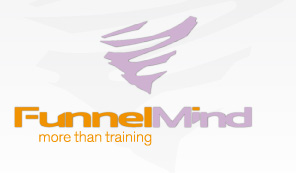Examples from practice
On following pages we feature case studies from projects where the method was fully or partially utilised. Practical programme illustrations can provide our clients with inspiration for utilisation in their own company.
Example 1: Company Culture Change
This is a case study from family company founded in atmosphere of mutual interaction, individual responsibility and initiative. The problems appeared at the moment the company started to grow. Natural chaos was not sufficient for management and collisions of responsibilities and competences commenced.
» more
Problem source: Management oriented more on execution than on team management, zero rules and systems; everybody participated on decisions and cared more of the others‘ responsibilities.
Desired state: Standardisation, modern methods, employee quality and client attitude improvement on the lowest levels, improvement of management team quality, HR systems implementation.
Action: Managers‘ coaching, development programs for all management levels, projects concentrated on standardisation, systems and rules.
Result: The company launched new processes and systems reflecting responsibilities of all departments. The action plan carriers are responsible members of top management, execution is ensured cross-sectionally through the whole company. After a year of active implementation the company achieved increase of turnover despite of difficult economic situation, employee motivation to solve problems improved, sick- and fluctuation rates declined.
Example 2: New Manager = New Enemy
Production company working on the market already 15 years. It lived its peaceful life, problems were unduly solved, no innovation went through. With the onset of crisis the foreign owner increased requirements on effectiveness, productivity and expenditure reduction. A new production manager joined the company to fulfill new owner’s requirements. The new manager started to introduce standards and systems usual in automotive industry – i.e. Lean, 5S, Kaizen etc. The employee reaction on all levels was very negative.
» more
Source: Strong role of middle management and weak top management, common laws, rigidity, zero rules and systems, management oriented more on „problem extinguishing“ than on innovation and development.
Desired state: Improvement of work productivity and systems effectiveness, support of team cooperation, employees openness to changes.
Action: Development programme for key production positions focused on new standards, new trends and improvement of management skills.
Result: Originally negative middle management changed their attitude, look for new solutions, come with innovative ideas. Slight changes in work organization and team cooperation immediately brought productivity and employee motivation improvement.
Example 3:„Corridor Communication“
The company went through long owner change what invoked a strong instability in the key department (carrier of main business). The communication passed over in the form of „corridor guaranteed reports“. Resignation of top people threatened, dissatisfaction and frustration of employees started to appear, performance of the department strongly failed.
» more
Source: Fear of the future, unclear communication of changes by the top management and unclear objectives; niggly problems grew to enormous proportions.
Desired state: Find common solution of cumulated problems and stabilise the team.
Action: Thanks to tense atmosphere within the team the first third of the programme was accepted by the participants very negatively. It was the most difficult group of people (approx. 90 people divided into 3 groups) – thanks to strong emotions that affected the participants‘ behaviour. But at the end each of the groups left the session with high quality action plan, people again found common goals and retrieved energy and motivation.
Result: Stabilised team, within 3 months they succeeded to fulfill 100% of action plan tasks and the results are successfully utilised in the company already for several years.


